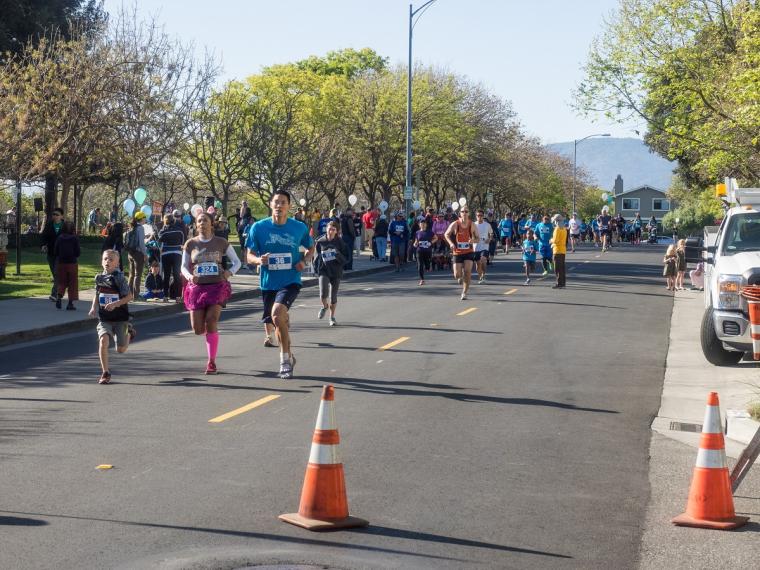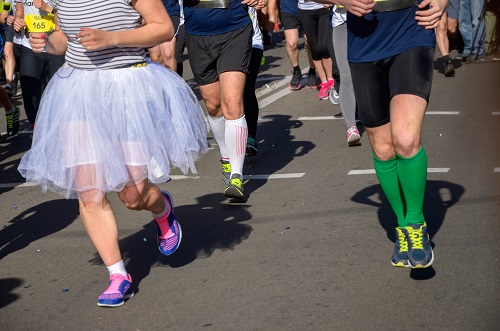
Running is becoming an older sport, and a new survey from Running USA has the numbers to back it up.
In a new report, Gen Z and Young Millennial Attitudes Toward Running, the organization notes, a shift is clear: Over the past 10 years, the core demographic for event participation was 25- to 54-year-olds, with 35- to 44-year-olds comprising the largest participant segment.
As with pretty much every organized sport, the big shakeup in running occurred when 2020 hit. Post-COVID, as the former core demographic turned 35 to 64 years old, young participants did not move into the sport to take their place. And that, says Running USA, means that event owners are struggling to regain their numbers.
“In short,” the report notes, “ more participants are aging out than are coming in. If the running industry ignores this trend, it is at the risk of its future growth.”
Definitions vary regarding the ages of Gen Z and Millennials; however, those answering the Running USA survey were between the ages of 18 and 30. Additionally, breakdown is provided according to the demographics of respondents, with regard to age, race and gender, something that comes into play in great detail when motivations for participation in events is discussed.
Maybe the problem (at least in terms of race registration) can be traced to a lack of interest in vigorous activity. The report notes that walking is by far the most popular physical activity commented upon by 18- to 30-year-olds. Two-thirds of respondents said they walk, a third run and a third weight train. About 40 percent said they did so three to four times a week, with about the same percentage doing so at commercial fitness centers (with Planet Fitness and 24-Hour Fitness as the most popular). Nearly a quarter of respondents didn’t use any programs or platforms for their physical activities.
These are generations that value (according to their comments) social justice, and many noted they viewed running as open to everyone rather than as an activity just for competitive athletes. As a side note, Running USA says, races that are advertised as Walk/Run or Run/Walk tend to appeal more, since they seem less intimidating and more user-friendly.
 And the younger the respondent, the more cost seemed to be a factor when it comes to fitness in general. Membership at a clubs with a lower price point (including YMCAs and 24-Hour Fitness) had wider acceptance, rather than more expensive programs, such as Peleton.
And the younger the respondent, the more cost seemed to be a factor when it comes to fitness in general. Membership at a clubs with a lower price point (including YMCAs and 24-Hour Fitness) had wider acceptance, rather than more expensive programs, such as Peleton.
Dovetailing into this observation was the preference of respondents to join running (or more accurately, jogging or fun walk) events in order to have fun, be with friends and support a cause. They do not seem to be particularly competitive, according to the report; for them, it’s all about the experience.
That’s not to say we’re going to see a return to the themed races that used to fill calendars; those seem to have died off.
“I believe there are a couple of factors at play,” Phil Steward, editor and publisher of Road Race Management told SDM last year in an interview. “Prior to the pandemic, it seemed like the interest in uniquely themed runs had peaked. Starting with the color runs back in 2014-2015, there was explosive growth in this genre of events. It seemed like there was a new national series of themed events launching every week. I believe there was an oversaturation of this type of events and, like many fads, once people had done one or two of them, interest began to wane. Then the pandemic caused the entire sport to take a two-year time-out and interest in this type of event just hasn't rekindled.”
Those races weren’t cheap either and the overall cost of registration is a concern among runners. Race forums across the Internet are filled with complaints about the cost of participating in 5Ks and savvy race directors have looked for ways to lower the entry fee. Some advertise races with a base registration fee that includes a race bib and a post-race party (usually sponsored), with add-ons that registrants can choose if desired such as a medal, a T-shirt in a sweat-wicking fabric, hat, etc.
Additionally, because younger runners are more technologically adept, race directors are marketing to them differently:
“When Millennials were entering adulthood, 95 percent of them learned about events through Facebook. Now, 88 percent of Gen Z and 93 percent of Millennials are watching YouTube. As of this writing, Instagram and TikTok are the second- and third-most (respectively) popular social media platforms.”
Running USA recommends marketing events by thinking beyond the Like button and stepping away from text messages. Instead, say researchers, race directors who create content on YouTube, Instagram and TikTok will stand the best chance of interacting with their desired audience
In conclusion, the report states, “As our current participants get older, it’s imperative that we bring in newer, younger and more diverse runners. The inclusivity of Gen Z provides a natural willingness to engage a broader range of participants in our events – but they will respond only if the industry’s stakeholders recognize that our previous forms of participant communication and activities must be reanalyzed and revamped.”
The full report can be purchased from Running USA at this link.

